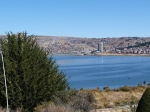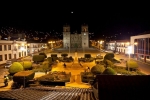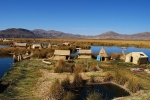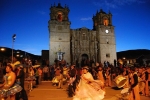Information about Puno
Puno according to the National Institute of Statistics and Informatics is the twentieth most populous city and housed Peru in 2007 a population of 125,663 inhabitants.
Puno is a major service center, commercial, tourist, industrial, cultural. They span from the town of Uros Chulluni northeast center, the urban district Paucarcolla north, urbanization City Site Totorani northwest (road to Arequipa) and extends into the populated center Ichu south and My community southwest Peru (road to Moquegua).
The physical space ranges from the western shore of Lake Titicaca, in the inner bay of Puno (before Paucarcolla) on a slightly undulating surface (the central part) surrounded by hills. The upper part of the city has a semi-flat surface (Community My Peru, Yanamayo). Ranging between 3810-4050 meters (between the lakeshore and the higher parts). Puno is one of the highest cities in Peru and the worlds fifth. Currently it covers an area of ÃÂâÃÂÃÂÃÂÃÂÃÂâÃÂÃÂÃÂÃÂ1566.64 which represents 0.24 of the territory of the province of Puno.
0000 years B.C. hunter and gatherer nomads, united by family ties and foraging, toured the plateau, hunting tarucas, alpacas, llamas, vizcachas among others.
Found tombs and caves with human remains and ceramic tissue in the hills of the nearby hills and Huajsapata Esteves island belonging to indigenous human groups predominance of Pucara Culture and the culture Tiahuanaco.
In the Puno Region it organized the most ancient urban center of the area, called Pucara, with monumental architecture and valuable sculpture and ceramics. There ended the whole previous stage of domestication of plants and animals high Andean and then created what would civilization of Tiwanaku.
Since then it began the construction of large buildings in the form of elongated truncated pyramids, that became characteristic of Pucara. By approximately 200-300 A.D.
Decomposes tiahuanaco between the twelfth and thirteenth centuries, several independent kingdoms were formed: the Kolla, centered on Atuncolla and sillustani; Lupacas center in Juli and Chucuito, with notable settlements like Cochacacha; and the Pacajes, around the Desaguadero.
Puno formed a marginal population located between the boundaries of the territories of Kolla (Quechua) north and Lupacas (Aymara) south.
An army of 200,000 warriors led by the Inca Pachacutec and Apo General Condemayta expire after fierce resistance to the Kolla, which were razed and the extracted survivors, leaving only children and the elderly, the Incas bring mitimaes, chiefs, tucuyricus and faithful people to Empire and located in the foothills Huajsapata.
Quechua and Inca customs, becoming a town of Puno in step, furlough, dairy and actual pascana is imposed, as was the conduit leading to the mines of Potosi in Bolivia, making it a mandatory step.




